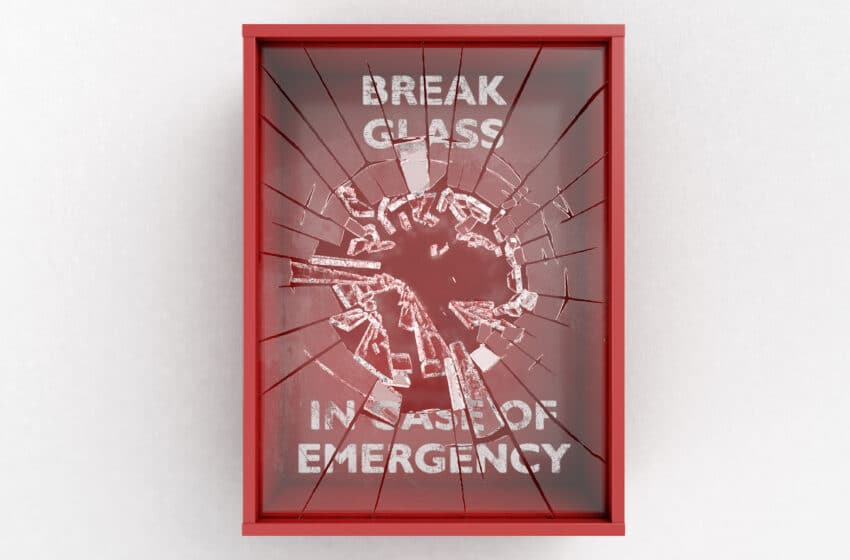Things Are Going Great? Time for a Crisis.

How to use a mock crisis to maintain a well-oiled business machine
Business executives dream of the day when operations are smooth, employees are happy, and the company’s finances are in great shape. Those who achieve that trifecta should absolutely celebrate. But it’s amazing how success can cause numerous blind spots for managers and executives. The greater the success, the more severe the blind spots.
As an advisor, I sometimes poke on those potential blind spots only to get a reaction like “Hey, we’re doing really well, what’s the problem?” Well, having no problems can be a big problem for multiple reasons. These oversights can backfire later if you’re not careful. That’s the focus of this edition of Startup Success.
Setting the Stage
An executive can have blind spots in a variety of areas. Maybe it’s tools and processes that are currently used but won’t scale for much longer. Maybe it’s a new competitor that remains invisible to you for too long. But one of the executive’s most significant blind spots, and the focus of this article, relates to employees—more specifically, deadweight, underperforming employees, and the suboptimal programs or initiatives they might be working on.
We all aspire to build a high-performing team of A-players who work both hard and smart. But no matter how diligent we are at interviewing prospective employees, some B – and C-players are certain to slip through. This is especially the case when your company is doing really well, because you likely have an aggressive hiring plan and desperately need more bodies to keep the success going. Aggressive hiring plans can cause hiring managers to shortcut their due diligence and/or lower their bar.
The other thing that can happen during a successful period is that your hard workers suddenly start working less hard. After all, things are going really well, so why put in that extra effort or point out things that are likely to break or not continue to scale?
And if the overlooked issue isn’t the employees themselves, it could be what they are (or aren’t) focusing their effort on. We often grow our business by adding new products, targeting new customer segments, or expanding into new geographic markets. But as we add more and more of these things to our operations over time, we often forget to reevaluate the previous things we were doing to make sure they are still beneficial to our future goals and vision.
During stable, positive stretches of company performance, issues can quietly develop around any of these dynamics. If you don’t root them out early, your successful era can easily decline into mediocrity, or even business-threating underperformance.
Time for a Crisis!
As many of us learned in 2020, crises are a great opportunity to reassess priorities and get back to performance fundamentals. But rather than waiting for a new crisis to strike and having to make the hard decisions on the fly—who to lay off, what expenses to cut—you can go through the exercise of a mock crisis. During the initial stages of the global pandemic, I’m certain that the companies that had and sort of “in case of emergency, break glass” plan in early 2020 were more prepared for the actions they quickly took in order to keep their company alive during the real crisis. Going through a simulated crisis helps you develop such a plan, and even points to actions you can take right now.
Pretend it’s September 16, 2008—the day after Lehman Brothers suddenly filed for bankruptcy and economic panic set in, triggering the beginning of the Great Recession. You don’t know what the next couple of years are going to be like, but you need to be prepared to reduce your costs in case it’s necessary for survival. Reacting too late could cause massive chaos and potential death to the company.
I don’t think the exact type of crisis scenario you use makes a huge difference. It should be something the executive team can relate to, which means that a massive asteroid colliding into the Earth and causing the next Ice Age is certainly going too far.
Gather the executive team and present a scenario that requires a 20 to 25 percent expense reduction. Ten percent isn’t enough for this exercise to show its value, and 35 percent or more isn’t really necessary to derive the benefits. Obviously, if your team has fewer than 10 employees, this exercise isn’t nearly as practical or worthwhile. But with 25 employees or more, you’ll be amazed at how insightful the exercise is.
Revelations
When a real crisis happens, very painful actions are taken. Revenue-generating products might be eliminated and beneficial programs and activities might be reduced or eliminated. Depending on the severity of the crisis, you may decide not to maintain a product line, geographic territory, program, or activity. Two of the first victims in this exercise are often marketing programs and travel.
Your mock crisis will force you to reprioritize all these. Even though the circumstances aren’t real, you may find that the items towards the bottom of the list are candidates to eliminate or curtail regardless.
A real crisis often involves layoffs as well. That means letting good employees are let go—in other words, employees who weren’t stealing from the company or otherwise doing damage. You’ll surely do everything possible to save your true A-players, even if it means redeploying them into other preserved roles, but solid B-players will are also affected. Meanwhile, your C- and D-players are the most likely candidates for dismissal.
Going through the mock layoff will enable your managers and executives to see these otherwise-hidden B-, C-, and D-players before you have to start making decisions about who to lay off. Your managers will be forced to stack-rank their employees while assessing their expected contribution to the business for the duration of the crisis. Somebody has to be at the bottom of the list for each function. And some functions will be affected more than others. You may find that, even though things are good right now, they could be even better if you reform or dismiss some of the deadweight on your team.
The greatest value of the mock crisis lies in the discussions and debates it sparks among the management team. And the more you treat the exercise like a real crisis, the better.
I predict that you and your executive team will decide to take some actions following the mock crisis. In fact, I guarantee you will identify some employees that you need to talk to about their poor performance. But don’t be surprised if you also identify employees who need to be put on a performance improvement plan (PIP) with intentions to terminate if things don’t dramatically improve.
I further predict that you will identify underperforming products or programs that need significant action. Dead branches exist on even the most lush and healthy of trees. You must trim those dead branches to maintain a vibrant, growing organization.
Maintaining a Well-Oiled Machine
I sometimes say that “desperation reveals options that were always in front of you, but weren’t visible until you became desperate.” I recommend going through this mock crisis exercise starting when you have about 25 employees and every year or two after that. Just incorporate it into your management system. It sucks to build a well-oiled machine that’s generating big success only to have it start crumbling due to your inability to see through your blind spots.





